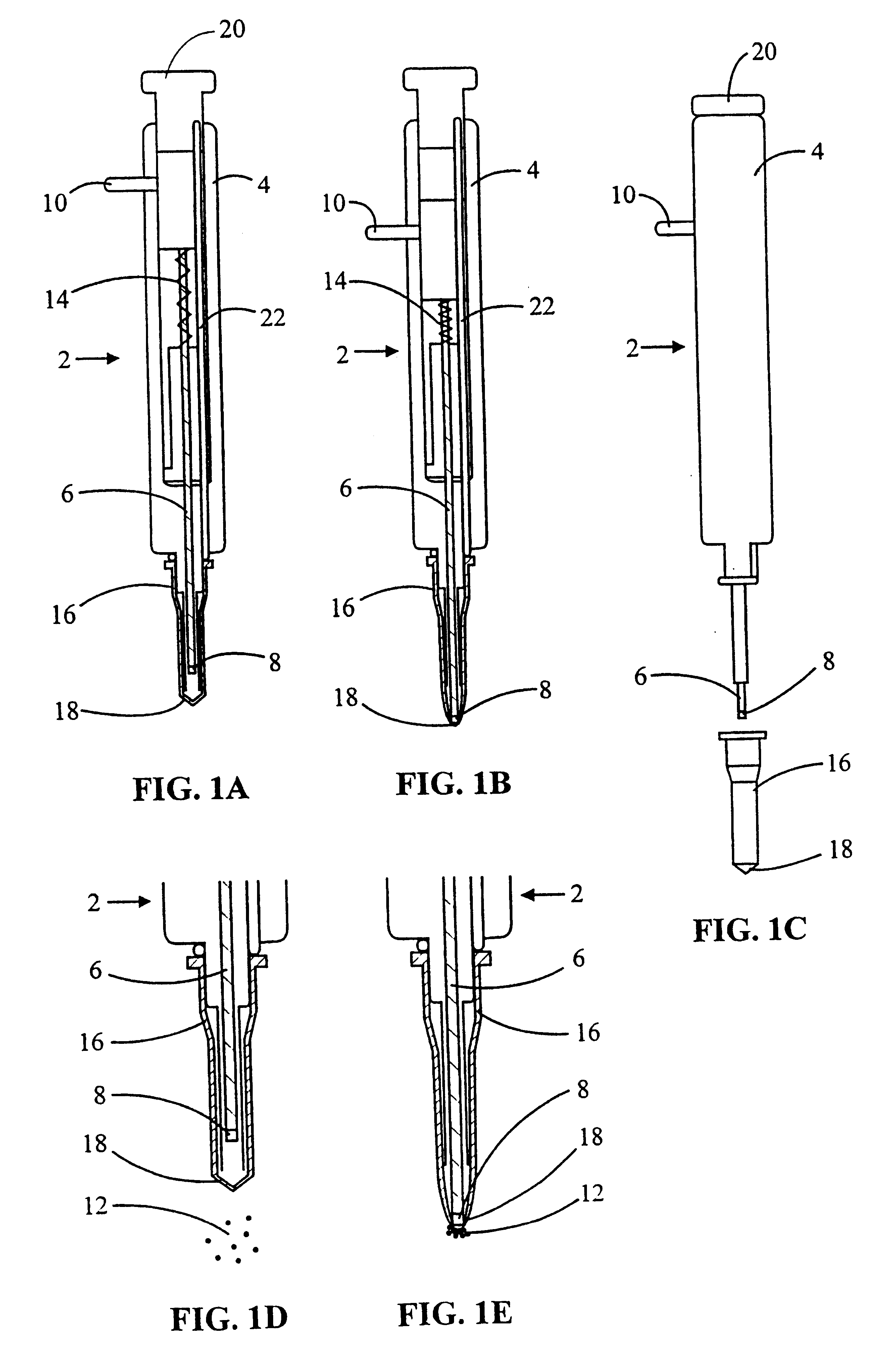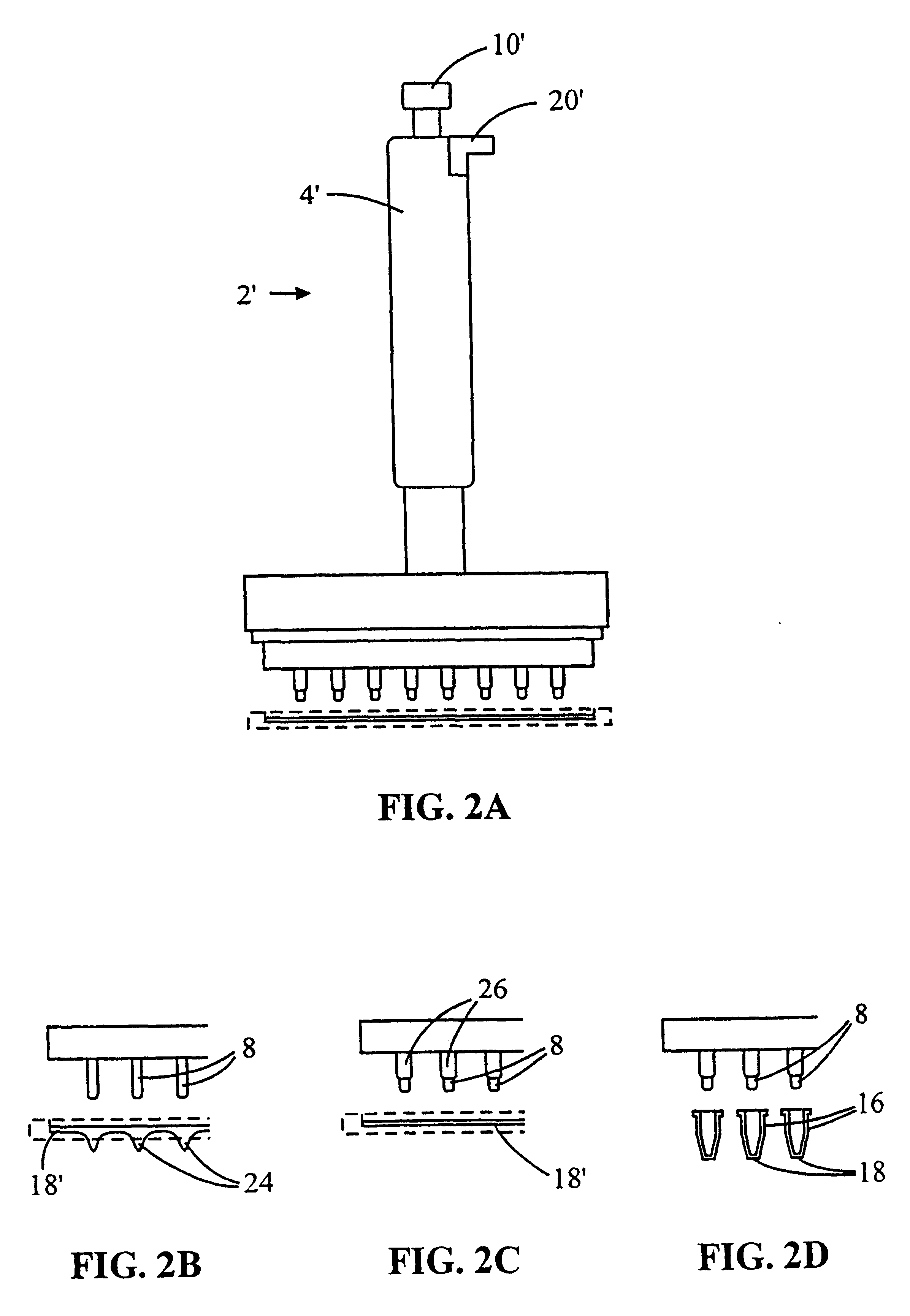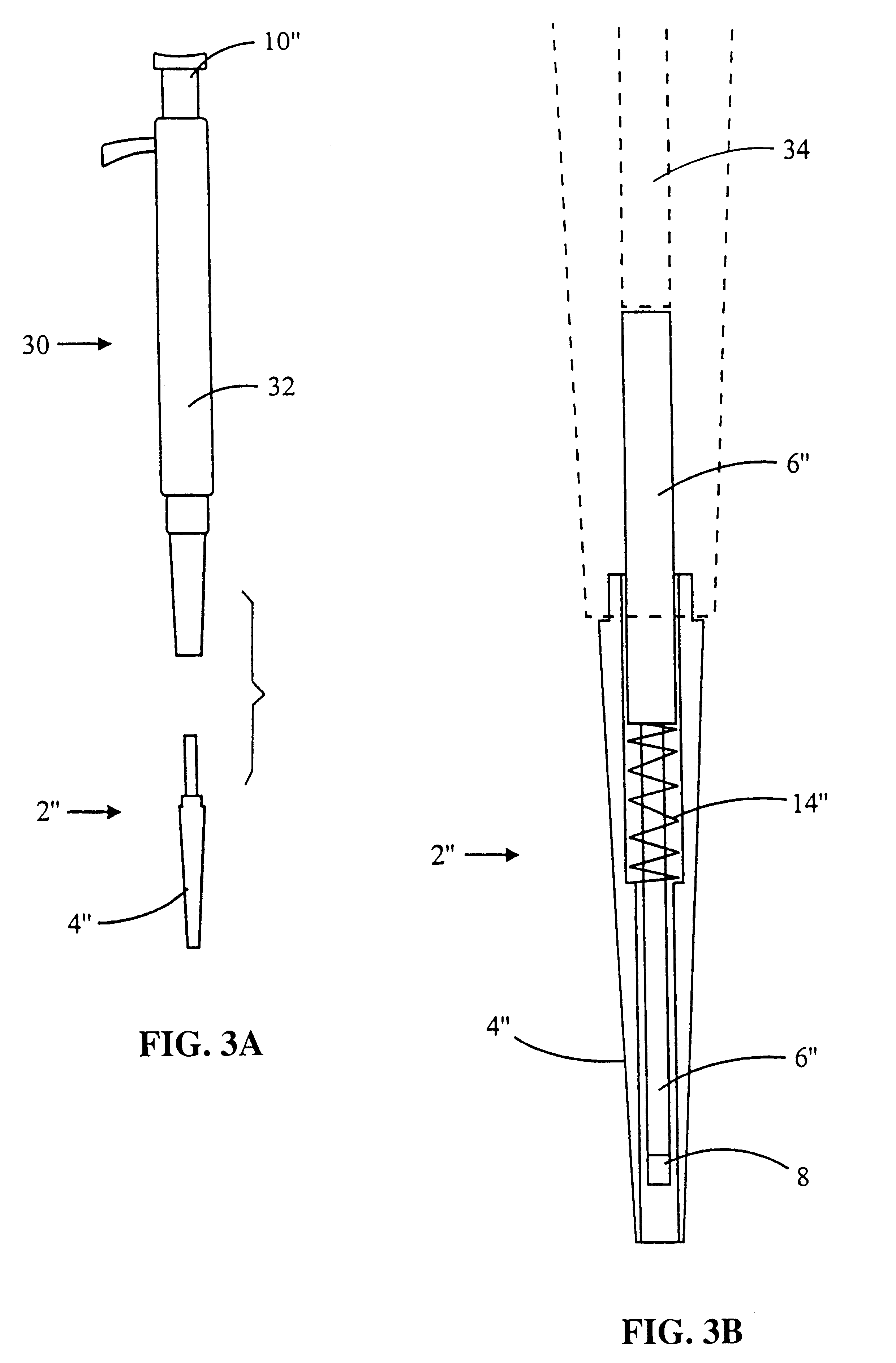Magnetic particle transfer device and method
- Summary
- Abstract
- Description
- Claims
- Application Information
AI Technical Summary
Benefits of technology
Problems solved by technology
Method used
Image
Examples
example 1
DNA Purification from Agarose Gel Using Silica Coated Paramagnetic Particles
DNA purification described below was done using the device for transfer of magnetic particles according to the invention and Merck's Silica Paramagnetic Particles for Molecular Biology.
.lambda.-DNA digested with HindIII, was separated by electrophoresis and the 6.6 kbp fragment was cut from the gel. The piece of gel was placed in a microcentrifuge tube to which 300 .mu.l of buffer A (7 M NaClO.sub.4, 1% Sorbit, 100 mM Tris-HCl, pH 8,0) was added. The suspension was incubated in a 50.degree. C. water bath for 10 minutes.
The microcentrifuge tube was removed from the water bath and magnetic particles were picked up using the device for transfer according to the invention. The magnetic particles were washed with 500 .mu.l of buffer A. Washing was repeated twice using as wash liquid 500 .mu.l of buffer B [70% ethanol, 50 mM Tris-HCl, pH 7.2, 1 mM EDTA (ethylenediaminetetraacetic acid)]. After the last wash the pa...
example 2
DNA Purification from Solution Using Carboxyl Coated Paramagnetic Particles
DNA purification described below was done using the device for transfer of magnetic particles according to the invention and PerSeptive Biosystems' BioMag.RTM. DNA Isolation Kit for PCR Products.
100 .mu.l of 4 .mu.g / ml plasmid pUC19 solution was pipetted in a microcentrifuge tube. A 10 .mu.l volume of washed DNA Sep particles was added thereto along with 110 .mu.l of hybridisation buffer (20% polyethyleneglycol 8000; 2.5 M NaCl). The suspension was mixed and then incubated at room temperature for 10 minutes.
The magnetic particles were picked up out of the solution with the device for transfer according to the invention. The particles were washed twice with 100 .mu.l of Wash Solution (70% ethanol) whereafter they were left to dry on the tip of device for transfer.
DNA was eluted from the particles by adding 30 .mu.l of elution buffer (10 mM Tris, pH 8) and incubating for 5 minutes at room temperature. The parti...
example 3
Plasmid DNA Purification from Escherichia coil Bacterial Cells Using Carboxyl Coated Paramagnetic Particles
DNA purification described below was done using the device for transfer of magnetic particles according to the invention and PerSeptive Biosystems' BioMag.RTM. Mini-Prep DNA Purification Kit. The 9.0 kbp plasmid to be isolated was transformed in E. coli cells.
3 ml of bacterial cell culture was centrifuged and the supernatant discarded. The pellet of cells was suspended in 30 .mu.l of Solution 1 (50 mM glucose, 25 mM Tris, 10 mM EDTA). 10 .mu.l of RNase and 60 .mu.l of Solution 2 (0,2 M NaOH, 1% SDS) were added. The suspension was incubated at room temperature for 5 minutes. 45 .mu.l of Solution 3 was added (3 M potassium, 5 M acetate) and the suspension was incubated on ice for 10 minutes. The mixture was centrifuged for 10 min at 15 800.times.g.
The supernatant was transferred to a microcentrifuge tube containing 10 .mu.l of washed DNA Sep particles. 150 .mu.l of 2.times. Hybri...
PUM
| Property | Measurement | Unit |
|---|---|---|
| Time | aaaaa | aaaaa |
| Force | aaaaa | aaaaa |
| Magnetic field | aaaaa | aaaaa |
Abstract
Description
Claims
Application Information
 Login to View More
Login to View More - R&D
- Intellectual Property
- Life Sciences
- Materials
- Tech Scout
- Unparalleled Data Quality
- Higher Quality Content
- 60% Fewer Hallucinations
Browse by: Latest US Patents, China's latest patents, Technical Efficacy Thesaurus, Application Domain, Technology Topic, Popular Technical Reports.
© 2025 PatSnap. All rights reserved.Legal|Privacy policy|Modern Slavery Act Transparency Statement|Sitemap|About US| Contact US: help@patsnap.com



